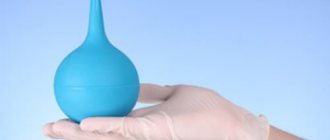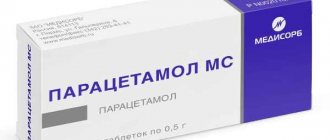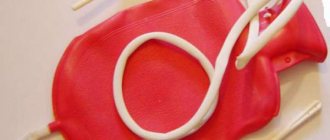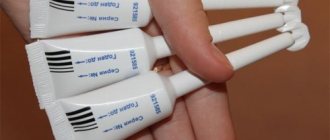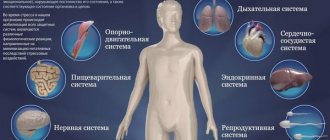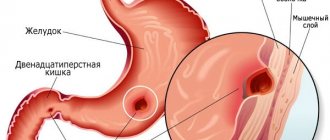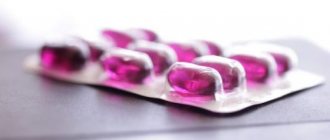Many are familiar with the common method of cleansing and treating the body as an enema. They are done at home and in hospitals. There are many varieties known, depending on the purpose of use. Therapeutic ones are also common.
A medicinal enema is a medical procedure during which medications are administered orally. The drugs are used for local and general action. As a rule, for medications, a volume of medications up to 100 ml is used, which is considered a microenema.
It is important to take into account the temperature of the injected liquid. It should be neither hot nor cold. A thermometer reading of 37-38 degrees is considered acceptable. Compliance with the temperature regime will ensure complete and immediate absorption of medications by the intestinal walls. Deviation of temperature indicators in both directions will lead to the act of bowel movement, which will reduce the result of the procedure.
Features of performing an enema
An enema has a beneficial effect on the body and individual organs. When administered, including medication, absorption of the drug by the intestinal walls begins. If we talk about medicinal, it means more of a local effect. Of course, the body also benefits, only indirectly. The purpose of treatment is to influence the area of the body or organ that requires treatment.
A rubber bulb is used for staging. A less common option: a Janet syringe with a special catheter.
Hypertensive enema
This procedure is prescribed only by a doctor, but can also be performed at home.
Indications:
- constipation;
- swelling;
- presence of hemorrhoids;
- increased intracranial pressure.
The main advantage of a hypertensive enema is its gentle effect on the intestines.
The solution can be purchased at a pharmacy or prepared yourself. You will need:
- salt;
- glass container;
- stainless steel spoon.
It is necessary to prepare precisely such items, since sodium chloride can trigger the process of destruction of chemically unstable materials. You need to dissolve 3 tbsp. l. salt in 1 liter of boiled and cooled to 25 ° C water. You can also add magnesium sulfate, but only with the permission of the attending physician, since this substance irritates the intestinal mucosa.
Both types of enemas and their administration are different, and therefore special attention must be paid to the procedure algorithm so as not to cause harm to the body.
Procedure:
- Prepare a solution and fill a 1 liter Esmarch mug with it.
- Lubricate the tip generously with Vaseline or baby cream.
- Lie on your side and, spreading your buttocks, insert it into the anus to a depth of about 10 cm.
- Press lightly on the rubber balloon so that the solution flows slowly.
- After completing the procedure, remain in a lying position for half an hour.
All equipment must be disinfected. If all actions are performed correctly, the patient will not be bothered by discomfort or pain.
Indications for the procedure
Enema treatment is used for a wide range of diseases. It is advisable to consult a doctor before use. Moreover, when not just water or a decoction of herbs is administered, but a medicine. Below is a list of conditions for which colonic cleansing is used:
- Lack of results from taking laxatives.
- Incessant constipation.
- Infections in the rectal area.
- During illnesses when the use of sedatives and sleeping pills is required.
- Inability to administer the substance by alternative means.
- Inflamed rectum, sigmoid, small intestine.
- Inflammatory process of the prostate gland.
- Disturbed menstrual cycle.
- Cystitis.
In addition to the above, enemas are used before operations, intestinal examinations and childbirth.
A medicinal enema is administered for general purposes in the following cases:
- Undesirability of taking the medication and inability to take it orally.
- Liver dysfunction when nutrients and beneficial substances are not absorbed.
- The need to administer sleeping pills.
The composition of the solutions is varied. This includes medicinal herbs: chamomile, marshmallow, oak bark, valerian. Additionally, antibacterial drugs in the form of solutions, painkillers and others are used.
As mentioned above, a microenema differs from a regular cleansing one. The procedure is characterized by a small volume of administered drugs - from 50 to 200 ml. It produces a cleansing and local effect.
Emulsion enema
Most often, this procedure is used in cases where the patient is prohibited from straining the muscles in the abdominal area, which inevitably occurs during a difficult bowel movement.
Also, indications for performing an emulsion enema are:
- prolonged constipation if a course of taking laxatives was ineffective;
- inflammatory processes in the intestines that are chronic;
- hypertensive crisis (with this disease, general muscle tension in a person is undesirable).
In addition, an emulsion enema is more effective than a cleansing enema and can replace it.
The procedure is performed in a hospital setting, but it can also be done independently.
As a rule, the emulsion is prepared from the following components:
- decoction or infusion of chamomile (200 ml);
- beaten yolk (1 pc.);
- sodium bicarbonate (1 tsp);
- Vaseline oil or glycerin (2 tbsp.).
The preparation process can be simplified by mixing fish oil and water. The volume of each component should be half a tablespoon. Then this emulsion must be diluted in a glass of boiled and cooled to 38 ° C water. Preparing both options is not a complicated process and does not require special skills.
Sequence of actions when performing an emulsion enema:
- Prepare the liquid and fill it into a syringe or Janet syringe.
- Lubricate the tip of the product with Vaseline or baby cream.
- Lie on your left side, bending your knees and pressing them to your stomach.
- Having spread the buttocks, insert the tip into the anus to a depth of about 10 cm. To simplify this process, you can use a gas outlet tube by installing it on a syringe or Janet syringe.
- Slowly squeezing the product until the entire volume of the emulsion enters the rectum. Remove it without squeezing it.
- Remain at rest for about 30 minutes.
Upon completion of the procedure, all used instruments must be thoroughly disinfected.
Algorithm for performing therapeutic enemas for the intestines
If the enema is administered correctly, there is no pain. You may experience an unpleasant feeling at the end of the procedure.
You need to know and follow the rules and sequence of actions - the algorithm. Correct administration of the solution ensures the absorption of medicinal substances by the body and immediate action.
Classification of therapeutic enemas
The following types of medicinal enemas are distinguished:
- Emollient, used for stool retention.
- Painkiller.
- Astringent.
- Annoying.
- Against parasites.
Stages of the procedure:
- The first thing to do is to obtain the patient's consent.
- The medical staff should tell you in detail about the features of the procedure and the upcoming manipulations.
- Thorough preparation of the employee for the procedure. Compliance with hygiene requirements: changing into clean clothes, washing hands thoroughly.
- The liquid is heated to the required level, the bulb or Janet syringe is filled.
- The place where the enema is performed should be well cleaned and prepared. Lay a clean oilcloth or other covering on the surface of the couch. An important condition is cleanliness.
- If necessary, help to get into the desired position. The patient should position himself so that he lies on the left side of the body with his legs bent to his stomach.
- The tip or syringe is lubricated with vegetable oil to facilitate its insertion.
- The gas outlet tube is carefully inserted inside to a depth of 15 cm. A Janet bulb or syringe is attached to its end. The medication is being administered. Reminds me of a medication drip.
- When all the solution is inside, the funds are removed, and the medicine remains inside. The best position for the patient after the medicinal procedure is on the stomach, this ensures optimal absorption of nutrients into the walls of the large intestine.
- The procedure ends with mandatory disinfection of the means used for manipulation.
The technique of the procedure is simple. The effectiveness is high because all the necessary substances enter the blood and from it to the organs.
The dosage must be strictly observed. It is greater when taken orally. When administering a medicine using an enema, it is necessary to take a smaller amount of the active substance, because absorption occurs more and faster. If strong medications are used, it is necessary to accurately calculate the dosage. Otherwise, poisoning may occur!
It happens that the patient begins to complain of discomfort during the procedure. In such cases, immediately stop the procedure and refer for examination.
Oil enema
It is a first aid remedy for constipation, the occurrence of which is caused by malfunctions of the autonomic nervous system. They are accompanied by severe pain and bloating, and feces come out in small hard lumps.
Other indications are:
- inflammatory processes in the rectum;
- postpartum and postoperative period (if surgery was performed on the abdominal organs).
An oil enema can be performed at home. With its help, feces are softened and the intestinal walls are covered with a thin film. Due to this, emptying is less painful.
You can use any vegetable oil in a volume of about 100 ml, heated to 40° C. The result does not appear immediately - you need to wait several hours (about 10).
Performing an oil enema:
- Prepare the liquid and fill the syringe with it.
- Lubricate the gas outlet tube with Vaseline or baby cream.
- Lie on your side and carefully insert it into the anus. Press down on the syringe, regulating the rate of oil flow into the intestines.
- Remove it without squeezing it. Maintain the position for about 1 hour.
It is recommended to carry out the procedure before bedtime. After waking up in the morning, bowel movement should occur.
Pros and cons of medicinal enema
Those who take their health seriously have probably heard that a clean intestine leads to the health of the whole body as a whole. The fewer toxins in the body, the better it copes with normal functions. A person feels lighter and his performance increases. Even the worldview is changing.
Enemas help remove waste and toxins, go well with diets, and give excellent visible results. It is worth saying a little about the pros and cons of this treatment method.
Pros of using enemas:
- The method is accessible to everyone - this is the main advantage. An adult can do it independently at home, having familiarized himself with the necessary thematic information in advance.
- Preventive intestinal lavage helps remove feces that the large intestine has accumulated.
- If you need to increase the effectiveness of an enema, it is recommended to add decoctions of various herbs to the water, depending on the disease.
- The work of the intestine and its lower sections is stimulated, which contributes to the normal functioning of the organ and timely emptying.
- An intestine cleared of toxins, with normal microflora, gives a wonderful cosmetic effect of a fresh face. There is a general increase in vitality: improved performance, decreased fatigue, a feeling of lightness in the body.
Disadvantages of using enemas:
- In the process of washing out toxins, part of the beneficial microflora leaves the body, which leads to an imbalance in the intestines. It is worth adding that this danger arises only in cases of frequent use of the method. We need a measure.
- The anus is subject to mechanical trauma. This is especially harmful for hemorrhoids. To soften the mechanics of the tip insertion process, you need to lubricate it with vegetable oil. This will help avoid injury and damage.
- Constant administration of enemas leads to the fact that the intestines relax and become sluggish. Why bother when they do all the work for him? Sound authority approach. Intestinal atony, or “lazy bowel syndrome,” occurs. It is advisable to use enemas only when nothing else helps. Natural methods are known in which the intestines participate, performing the work assigned to it by nature.
A therapeutic enema is a good alternative. The intestines are an organ that should be kept clean. Timely removal of toxins, poisons leads to healthy functioning. When choosing this method, you need to consult a doctor to exclude the presence of contraindications and get recommendations on the substance used and dosage. With the right approach and following the algorithm, the effect will not be long in coming.
Medicinal enemas are divided into local-action enemas (micro-enemas) and general-action (drip) enemas. Medicinal enema (microenema). Target . Providing local effects for diseases of the rectum; general (resorptive) effect on the entire body. Indications . Diseases of the rectum. Contraindications . Acute inflammation of the anus; rectal tumor; gastrointestinal bleeding. Equipment . Medicinal solution as prescribed by a doctor; Janet syringe or rubber spray; sterile rectal tube 30 cm long or catheter; sterile petroleum jelly; sterile gauze wipes; water bath, clean jar; water thermometer; oilcloth, diaper.
Siphon enema
This procedure is considered complex, and therefore it is prohibited to carry out at home. It can only be performed in a clinic with a nurse and doctor present.
This type of enema is considered the most traumatic from both a physiological and psychological point of view, so it is performed by specialists who have extensive experience in this field and are able to create trusting contact with patients. In addition, a procedure performed independently at home can result in dysbacteriosis, regular constipation, and failure of intestinal motor function.
A siphon enema provides the maximum degree of cleansing, but even in medical institutions it is rarely performed. It is considered “heavy artillery” and is prescribed exclusively for health reasons:
- severe poisoning;
- intestinal obstruction;
- preparation for emergency surgical intervention of an unconscious patient;
- intussusception.
The method is based on the law of communicating vessels. In this case, they are a special funnel and the patient’s intestines. The interaction between them is achieved by changing the location of the container with rinsing water relative to the human body. Thanks to this, the liquid cleanses the intestines and leaves it immediately.
The procedure requires a large volume of boiled water (10-12 l), cooled to 38° C. Occasionally it is replaced with saline solution. No drugs are added to the water, with the exception of cases when it is necessary to introduce a substance that neutralizes poison in case of severe poisoning.
In addition to the action, the technique of administering them differs for all types of enemas. Siphon is considered the most difficult.
Algorithm of actions of a medical worker:
- A cleansing enema is performed first.
- The funnel is connected to a rubber tube, which is lubricated with a thick layer of Vaseline.
- After this, its end is inserted into the rectum to a depth of 20 to 40 cm. If difficulties arise at this stage, the nurse inserts the index finger into the anus, guiding the tube correctly.
- The funnel is filled with wash water and installed at a height of about 1 m.
- After the liquid in it runs out, it falls below the patient’s body. At this moment, water containing feces and harmful compounds begins to flow back into the funnel from the intestines. Then they are poured out and clean liquid is reintroduced into the intestines. The procedure is carried out until the rinsing waters become clear, indicating complete cleansing.
If non-disposable devices were used, they are thoroughly disinfected.
Administration of a medicinal enema (microclyster):
1. The patient is warned about the upcoming procedure. Since you need to lie down after it, it is better to give the enema at night in the ward. 2. 30 - 40 minutes before administering a medicinal microenema, a cleansing enema is given. 3. The medicine in the indicated dose is poured into a clean jar and heated in a water bath to a temperature of +37. +38°C. 4. Take the medicine (50 - 200 ml), heated in a water bath, into a Janet syringe or rubber balloon. 5. Place an oilcloth under the patient, then a diaper and ask him to lie on his left side, pulling his legs, bent at the knees, towards his stomach. 6. A rectal tube (or catheter) is inserted into the rectum with a 20 cm rotational movement and connected to a Janet syringe (or balloon). 7. Slowly inject the medicine into the rectum in jerks. 8. Having finished the insertion, clamp the tube with your fingers, remove the syringe, draw a little air into it, connect the syringe to the tube again and, releasing the air from it, push it! remaining medication from the tube into the intestines. 9. Remove the syringe, clamp the tube, and carefully remove the tube from the rectum using rotational movements. 10. The patient is advised to take a comfortable position and not stand up.
Medicinal enema, technique of execution.
Notes . To avoid irritation of the rectal wall and the urge to defecate, the concentration of the drug should be hypertonic. The medicine should be administered in small volumes. The medicine must be heated. After use, the rectal tube is soaked in a 3% chloramine solution for 1 hour. If a catheter is used instead of a rectal tube, it should be labeled and used only for insertion into the rectum. The manipulation should be performed with rubber gloves.
Methods for performing a cleansing enema at home
It is important to know that a cleansing enema at home must be carried out according to the rules, because the result of cleansing will directly depend on this. Even minor flaws can prevent you from achieving the desired result.
- It is necessary to prepare a solution for administration into the intestines. It could be plain water, or it could be vegetable oil. It is important to maintain the water temperature; it should be at least 38-39 degrees if the patient has severe cramps and pain.
- Instead of Esmarch's mug, you can take a regular heating pad or a simple rubber bulb with a tip. We must not forget about Vaseline to lubricate the tip to avoid injury.
The cleansing enema, the technique and the process itself are quite simple:
- You need to lie in the bath, spread your legs and place them against the wall, shoulder-width apart. This is necessary in order not to experience pain and discomfort when administering the solution.
- Then the pelvis needs to be raised, while the legs should be at an angle of 90 degrees.
- The tip is lubricated with Vaseline and carefully inserted into the anus 5-6 centimeters.
- The tap opens or, if it is a clamp, is removed, and the liquid flows into the intestine.
- To retain water, you need to lie on your back in the bath.
- When the urge to defecate begins, you need to lie on your right side. It is recommended to retain the water inside for up to 10 minutes.
- Carefully rise to your feet.
- After all the manipulations, you can go to the toilet.
- If during the enema a person begins to experience pain and pain, you need to stop the flow of the solution into the rectum. You can breathe deeply, lower your pelvis or raise it. This is necessary to reduce fluid pressure on the intestines.
- When the intestines are completely cleansed, it is necessary to disinfect all instruments, wash them with soap and water, and boil them, only after this the enema can be used the next time.
Drip enema.
Target . Drip enemas are given for therapeutic and nutritional purposes. Indications . Large loss of blood or fluid; artificial nutrition through the rectum. Contraindications . Acute inflammation of the anus; rectal tumors; gastrointestinal bleeding. Equipment . Sterile system for drip administration of liquids for single or multiple use; a bottle with a medicinal solution or flask; sterile rectal tube 30 cm long or catheter; water bath; heating pad with warm water (+40. +42 °C); lining oilcloth, diaper; Vaseline oil; gauze napkin; water thermometer; latex gloves.
Technique for performing a drip enema.
1. 30 - 40 minutes before the drip enema, a cleansing enema is given and after complete bowel movement the patient is asked to go to bed. 2. Heat the prescribed solution in a water bath to a temperature of +38 °C. 3. Install and fill the system with the prepared solution. 4. Lubricate the rectal tube (catheter) with petroleum jelly. 5. They put oilcloth and a diaper under the patient, ask him to lie on his left side, bend his knees and pull them towards his stomach. 6. Put on rubber gloves. The fingers of the left hand spread the buttocks. With the right hand, using a gauze napkin, take the rectal tube (catheter) and with rotational movements, observing the bends of the rectum, carefully insert it into the intestine to a depth of 20 - 25 cm. 7. Connect the tube to the system, adjust the frequency of drops (40 - 60 drops per 1 min). 8. Help the patient take a comfortable position. 9. Place a heating pad around the bottle. Notes. Since the procedure is lengthy, the patient should be warned about it in advance. It is better to give a drip enema at night, always in the ward. Control the frequency of drops and the temperature of the solution. Make sure that the tube remains connected to the system. If a catheter is used to administer an enema, it should be labeled and used only for insertion into the intestines. After use, the rectal tube (or catheter) must be soaked in a 3% chloramine solution for 1 hour and then treated according to OST 42-21-2-85.
Source: Abbyasov I.Kh. Fundamentals of Nursing, 2007
The use of enemas at home can significantly increase the effectiveness of the entire range of methods used in each case for the treatment of diseases of the digestive system, relieve patients from the painful sensations of constipation, accumulation of gases in the intestines and other disorders, ensure the necessary quality of preparation of patients for X-ray, endoscopic and other studies, prevent the absorption of poison from the colon that enters the body during acute oral poisoning. The wide indications for the use of enemas in everyday life urgently require the inclusion of devices for their implementation in the home medicine cabinet of every family and, accordingly, obtaining the skills to use this method of treatment. Administration of enemas, as well as any other medical procedures, must be performed strictly in accordance with the doctor’s recommendation. Otherwise, the adverse consequences may be unpredictably severe. Cleansing, siphon, medicinal and nutritional enemas are used.
It should be emphasized that self-prescription of the following baths without consulting a doctor is unacceptable. In this regard, it is advisable to note once again that uncontrolled implementation of any type of hydrotherapy is dangerous, as it can lead to undesirable, and in some cases, serious consequences.
Cleansing enemas include:
— warm water enema
(40-42 °C): 1-2 l for adults and 0.5-1 l for children;
— enema with mil:
You need to add enough boiled white soap to the water (preferably baby soap, lanolin soap, velvet soap, etc.) so that the water becomes opalescent; used for long-term constipation;
— salt enema:
add table salt to the water (2 teaspoons of salt per 1 liter of water; dissolve well); used for hard stool;
— enema with vegetable oil:
before the procedure itself, add 1/2 cup of table oil (sunflower, corn, olive, etc.) or linseed oil or warmed fatty paraffin to the water, mix well and do an enema; used especially for habitual constipation;
— laxative salt enema:
Barbara salt, Karlovy Vary salt, Morshyn salt, English salt (magnesium sulfate) or other laxative salt are added to the water in an amount of 1-1.5 tbsp. l. per 1 liter of water (unless the doctor gives other recommendations); the salt is first dissolved in a small amount of hot water, then poured into the water prepared for the enema and mixed well; is a reliable remedy for habitual constipation;
— vinegar and salt enema:
for 1/2 liter of water 1 tsp. salt and 1 tbsp. l. vinegar; is a very potent remedy used for long-term chronic constipation in patients with sharply reduced intestinal motor activity;
— sepia enema:
1 tbsp. l. dry senna leaves are poured with boiling water (1 glass), covered, left for 10 minutes, filtered and added to the enema; exhibits a very strong bowel-emptying effect;
— Chamomile enema:
chamomile is brewed like senna leaves and added to an enema; has a softening effect;
— enema with alum:
50 g of alum is dissolved in 1 liter of warm water; a remedy that works well in removing gases.
Small cleansing enemas
(150-250 ml) is used to soften stool (vegetable oil with glycerin) or to facilitate the removal of gases (glycerin). Vegetable oil enemas are also used after surgery for hemorrhoids or after suturing the perineum to facilitate the movement of stool and soften it. Small enemas should be done so that the patient retains the injected substances in the body for 30-120 minutes, after which, if necessary, another regular enema of water or water and soap is done.
Small cleansing enemas include:
— vegetable oil enema
or
liquid paraffin
heated to 40 ° C; quantity 150-200 g; softening effect.
— glycerin enema:
60 ml of glycerin per 120 ml of water heated to 40 ° C; softens stool and facilitates the passage of gases;
— turpentine enema:
1-2 tsp. turpentine for 180-200 g of vegetable oil; promotes the release of gases; turpentine strongly irritates the intestinal mucosa, so it should never be used in its pure form.
The necessary supplies for performing an enema are:
1) a reservoir for injected liquid, or irrigator; Most often, an Esmarch mug is used, which is a glass, metal or rubber cylinder with a capacity of 0.75 to 1.5 liters with a flat or other bottom, but a nipple drawn on the edge - a tube;
2) a thermometer for measuring the temperature of the injected liquid;
3) a rubber tube that conducts liquid; it should be thick-walled, about 1.5 m long, up to 1 cm in diameter and have a tap to regulate the flow of fluid into the intestines, the other end of the tube is connected to the tip;
4) intestinal tube - tip 8-15 cm long; more convenient tips are rubber, glass and plastic; Tips must be boiled before use;
5) lining oilcloth to prevent bed contamination;
The enema liquid is prepared in advance.
The patient lies on his left side with his knees pulled up to his stomach to relax the abdominal muscles. If the patient cannot move, he is placed on his back. A bedpan is placed under the buttocks, and an oilcloth is placed on the sheet, the free edge of which is lowered into a bucket or basin in case the patient cannot retain water. 1-1.5 liters of water at a temperature of 40-42 ° C are poured into Esmarch's mug, raised up and the tip lowered down to release a small amount of water, and with it the air present there. Fill the system, then, without lowering the mug, close the tap on the rubber tube. They check whether the tip is broken, lubricate it well with Vaseline and begin to insert it into the anus, after first spreading the patient’s buttocks with his left hand. The tip is inserted 8-10 cm upward and forward, and then turned slightly backward with light rotational movements, overcoming the resistance of the muscle that locks the anus. If there are protruding folds of the mucous membrane or hemorrhoids, you must insert the tip between them without touching them. If there are obstacles—the tube rests on the intestinal wall or a fecal stone—you need to remove it 1-2 cm and open the tap. Esmarch's mug is raised to a height of 1 m, and water under pressure enters the intestines.
If the tip is clogged with feces, it is removed, cleaned and reinserted. Sometimes the stool is so hard that it is impossible to give an enema. In such cases, you have to remove feces from the rectum with your finger, after putting on a rubber glove lubricated with Vaseline.
If there is gas and the patient develops a feeling of expansion, it is necessary to immediately lower the mug below the bed and, after the gas has passed, gradually raise it again.
Leaving a little water at the bottom of Esmarch's mug so that air does not enter the intestines, close the tap that regulates the flow of liquid, and gradually remove the tip with rotational movements.
It is advisable that the patient hold the water for 10 minutes. To do this, he must lie on his back and breathe deeply. At the end of the procedure, Esmarch’s mug is washed, wiped dry and covered with gauze or a towel.
When administering a cleansing enema, care must be taken not to inject a large amount of liquid at once. If after the enema the intestines have not emptied, then it can be repeated after a few hours, until the intestines are completely emptied.
Therapeutic (medicinal) enemas
are used in cases where it is impossible or contraindicated to administer medicinal substances by mouth. Medicinal enemas are divided into local and general enemas. The former are used to reduce irritation and inflammation in the colon, with erosions and ulcerations in the rectum. The second pre-
are prescribed to introduce drugs into the body.
30 minutes before the administration of drugs, a cleansing enema is given into the intestines. The contents of medicinal enemas should not exceed 50-100 ml in volume and should be heated to 38-40 °C. Medicinal enemas are administered from a rubber can (syringe) with a capacity of 50-200 ml using a large syringe placed on a rubber catheter, which is inserted into the rectum, or through a Janet syringe with a rubber catheter. All equipment must be well boiled before starting the procedure. The end of the rubber tube (catheter, tip, etc.) should be well lubricated with Vaseline.
Microclysters
are used for introducing therapeutic agents into the rectum in very small quantities, ranging from a few milliliters. A soft thin catheter is placed on the syringe, covering the tip of the syringe closely. A cleansing enema is given 30-40 minutes before the microenema. Then, with the patient positioned on his side, a catheter lubricated with glycerin or petroleum jelly is inserted and fitted to a syringe. Holding the free end with your left hand, insert the tip of a syringe filled with the desired solution into it with your right hand, and slowly squeeze this solution into the catheter. Next, holding and squeezing the outer end of the catheter to prevent the liquid from flowing back out of it, without removing it from the intestine, carefully remove the syringe, suck air into it, reinsert it into the catheter and, in order to push the remaining liquid in it, blow out the catheter.
A medicinal enema is a medical procedure based on the administration of medications for general and local action. Its total volume does not exceed 100 ml, so this procedure refers to microenemas. It can be used both for the purpose of introducing medications into the bloodstream system and for the primary treatment of diseases of the intestines, rectum, and anus.
The temperature of the administered medications should be around 37-38 degrees, otherwise the procedure will be accompanied by an act of defecation, which will lead to poor absorption of the medications and failure.
Nutrient enema
This procedure refers to artificial feeding of the patient. It is necessary in cases where it is difficult to introduce nutrients into the body through the oral cavity. But this type of enema can only be considered as an additional method of feeding. Typically, it is used to inject a 5% glucose solution mixed with sodium chloride.
The nutritional type of enema has the following indications:
- dehydration;
- temporary inability to feed through the oral cavity.
The procedure must be carried out in a hospital setting. Before it is performed, the patient thoroughly cleanses the intestines using an Esmarch mug. After the stool, along with waste and toxins, has been removed, the nurse will begin preparing for the process of introducing nutrients.
The composition of the solution is selected by the doctor in each specific case; at his discretion, a few drops of opium can be added to it. The volume of the liquid is approximately 1 liter, and its temperature is 40° C.
The algorithm for performing this type of enema includes the following steps:
- The rubber balloon is filled with solution, its tip is lubricated with Vaseline.
- The patient lies down on the couch and turns on his left side, after which he bends his knees.
- The nurse spreads his buttocks and carefully inserts the tip of the balloon into the anus.
- After this, she begins to slowly press on the product and continues to do this until the entire solution enters the rectum.
- Upon completion of the procedure, the tip of the balloon is carefully removed from the anus. The patient needs to remain in a supine position for about 1 hour.
The main difficulty that you may encounter is the occurrence of a strong urge to defecate. To get rid of it, you need to take deep breaths through your nose.
Indications for the procedure
This type of enema is indicated for:
- lack of effect after taking laxatives;
- constant constipation;
- infectious diseases of the rectum;
- various diseases requiring the administration of sedatives and hypnotics;
- impossibility of administering drugs intravenously and parenterally.
In addition, local use of a medicinal enema is indicated for inflammation of the sigmoid, small, rectum (the basis of the medicinal mixture is collargol and chamomile alcohol extract), as well as the prostate gland (the active ingredient is antipyrine).
For general use, a medicinal enema is recommended when
- administration of medications is undesirable or cannot be administered orally;
- the patient has liver problems (the administered medications are not absorbed into the liver and do not have a negative effect on it);
- it is necessary to administer a sleeping pill, for example, containing chloral hydrate.
What formulations are commonly used?
Enemas have different compositions. The most commonly used medicines are:
- starch (prescribed to coat the rectal mucosa);
- antibacterial drugs in the form of solutions;
- chamomile (effective for inflammatory processes);
- adrenaline in the form of a mixture (to eliminate bleeding);
- fern root;
- valerian;
- ferric chloride;
- Oak bark;
- zinc sulfate in combination with a solution of lapis;
- marshmallow root;
- poppy heads;
- flax seeds;
- anesthetic solutions;
- glucocorticoids, sulfasalazine (indicated for Crohn's disease and ulcerative colitis);
- collargol in the composition with oil and antipyrine (for the treatment of proctosigmoiditis);
- potassium permanganate, protargol in the form of weak solutions (for astringent enemas).
Contraindications
Medicinal enema is contraindicated in patients with:
- acute pain in the abdominal area of unknown nature;
- inflammation of the rectum, sections of the large and small intestines;
- anal injuries;
- bleeding of the gastrointestinal tract;
- intestinal oncology;
- the presence of protruding hemorrhoids;
- allergic rashes in the anal area;
- prolapse of the rectum, less often - of the large intestine;
- tumor conditions.
Staging rules
The algorithm for performing this medical procedure is as follows:
- The procedure must be agreed upon with the patient.
- The patient is warned in advance about the upcoming manipulation and the features of its implementation.
- The health worker changes into a clean uniform.
- A hand disinfection procedure is carried out (thorough washing, wearing gloves).
- The medicine is heated, a bulb or Janet syringe is filled with it.
- The place for the manipulation is prepared (the surface of the couch is covered with oilcloth and a diaper).
- The patient is assisted in lying on his left side with his knees bent and pulled toward his stomach.
- The gas outlet tube is lubricated with Vaseline.
- A gauze napkin is treated with petroleum jelly, after which the patient’s buttocks are carefully spread apart, and the anus is carefully examined for the absence of irritation, ulcers, and wounds.
- A gas outlet tube is slowly inserted to a depth of 15 cm into the anus.
- A bulb or Janet syringe is attached to the end of the tube, and the medicine is injected.
- After completing the administration of the medicine, without unclenching, remove the bulb or gas outlet tube clamped with a clamp.
- In order to achieve the fastest possible effect, the medicine is left inside for 25-30 minutes. The position that is most suitable for absorption of the medicine is lying on your back.
- All manipulation devices are disinfected.
A simple algorithm for performing the manipulation allows it to be done in cases where administering medications by mouth is difficult. With anal administration of drugs, the concentration of active components is actively absorbed by the walls of the mucous membrane and is quickly transported into the blood, exerting a therapeutic effect on organs and systems.
Do not forget that the process of absorption of medicine by the rectal mucosa is much weaker than by the walls of the stomach, so the dose of the medicine for an enema should be slightly larger than during normal administration.
Enemas with a predominance of potent drugs should be done with caution, because there is a risk of poisoning the patient. To avoid negative consequences, medications should be carefully dosed and their administration strictly controlled. If discomfort or complaints occur in the anus, you should temporarily abandon the procedure and conduct an examination.
Preparing the patient for an enema and placement of a gas tube.
Psychological: (in the form of a conversation)
- Identification of contraindications at the time of manipulation.
- About the nature of the upcoming manipulation
- About the need for this manipulation
- About the patient’s sensations during the manipulation.
- About the patient's behavior after the manipulation.
Physiological:
- The patient is placed on the couch on his left side with his legs brought to his stomach.
- Lying on your back is possible.
No matter what type of enema you plan to use, you do not need to adhere to strict rules before using them.
General recommendations:
- the day before the procedure, it is advisable to exclude foods rich in fiber from the diet;
- On the day before the enema, it is recommended to give preference to first courses.
If the purpose of the procedure is to cleanse the intestines, there is no need to take laxatives. They do not affect the result in any way.
